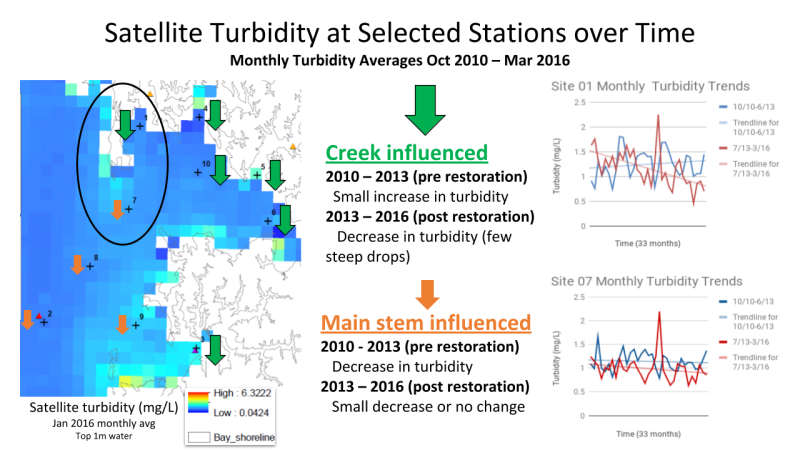Scientists have long understood that having more oysters in the water means cleaner water. That’s because oysters are filter feeders, so they remove particles from the water as they eat. Removing particles leads to clearer water. Recently, scientists at the NOAA Chesapeake Bay Office wondered: Are we restoring oysters at a scale where the effects of restored reefs can be measured? Can satellites help us measure those changes?
Working with a colleague from NOAA Satellites, they explored those questions. Their findings have been published in the NOAA Fisheries Technical Memorandum, “Using Satellite-Derived Total Suspended Matter Data to Evaluate the Impacts of Tributary-Scale Oyster Restoration on Water Clarity.”
While in-water studies have measured clearer water over restored reefs, using satellites was a new method. Satellite data also let scientists look at the question at a much larger scale.
Satellites can track water clarity by remotely sensing how much matter is suspended in the water. The researchers used these suspended matter measurements from satellites to determine whether any changes in water clarity could be linked to large-scale oyster restoration.
The scientists found that the satellite data helped them identify trends, and that the mature restored reefs were partially responsible for clearer water. The scientists are eager to learn more about other reasons for the clearer water. How much of the increased water clarity was due to increased oyster biomass? Did the geographic location affect changes in water clarity? What kind of oyster management was used in that area? Or perhaps some other variable?
The researchers are intrigued by these questions. Harris Creek has high oyster abundance and has experienced a decrease in total suspended matter. It will be a great place for scientists to investigate these questions in the future. That information will help us better understand the benefits of large-scale oyster restoration.

